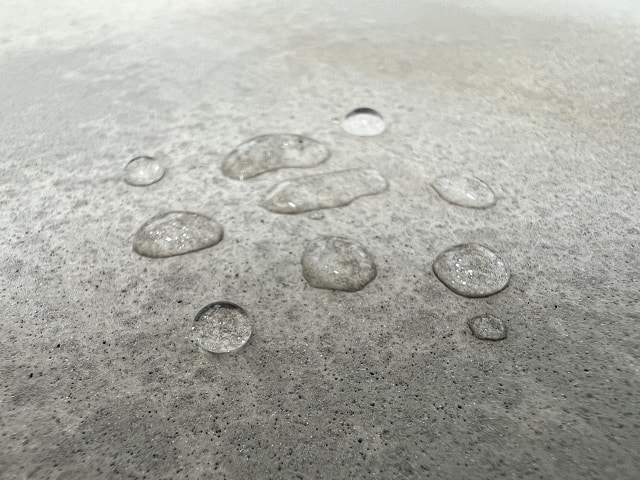Waterproofing Training Courses Update Your Skill Set Register Now
Choosing the Right Waterproofing Products for the Job Learn More

By Ashley Perks
More and more we are coming across new non-porous composite building materials on the market when waterproofing, often leaving us wondering “how do I prime this?”
Your first point of call should be the materials technical data sheet (TDS) and/or installation manual of the substrate. However, sometimes the manufacturer might not have considered the product being installed in a circumstance where waterproofing would be required.
Although not a guarantee, a simple porosity test can really help steer you in the right direction. A few drops of water onto the material in question can give you a good idea of its porosity and thus the correct primer to use. If the water droplets absorb and become a stain on the material’s surface after a five minutes, you have a porous substrate, and a general-purpose primer should provide sufficient adhesion.
If you find the water droplets are beading on the surface, retaining surface tension, and not absorbing after 5 minutes, it’s likely you have a non-porous or extremely low porosity substrate and will need to consider either an advanced adhesion primer or two-pack epoxy.
Some of the more common non-porous substrates such as aluminum, PVC and U-PVC should always be primed with a non-porous primer, unless another solution such as butyl tape or rubberised collars are installed.
Most larger manufacturers will have a non-porous primer in their product range. These primers have been formulated with adhesion enhancing properties on non-porous, smooth and dense substrates, eliminating the need for etching primers.
Gripset OP is one such example of a non-porous primer with outstanding performance, a single component, brush or roller applied product with a generous coverage rate and cure time. It is compatible with a range of Gripset liquid applied membranes, typical examples being Gripset 38FC for internal and Gripset P39 for external applications. Gripset Xpress SP is another primer with enhanced adhesion properties, and is suitable for use with both liquid applied and sheet membrane systems such as Gripset Xpresslay.
What about Epoxies?
In the past we saw two-pack epoxies commonly used when adhesion was a concern. Although it’s true that epoxies promote stronger adhesion, since the introduction of specific non-porous primers, most manufacturers promote their epoxies benefits as a moisture / vapour barrier, over their potential to increase adhesion on non-porous substrates. You should always consult the manufactures technical data sheet (TDS) to determine if their epoxy is recommended.
What’s the worst that could happen?
A smooth or non-porous substrate that is not primed correctly is significantly more likely to result in the membrane delaminating (separating), particularly at any areas subject to movement. Without sufficient adhesion to the substrate, a membrane that would otherwise flex and accommodate for movement is prone to delaminating should such movement occur.
I’ve often heard the remark that the membrane is “not going to go anywhere under a tile bed” when adhesion has become a concern. While somewhat true that the entire membrane is not going to lift like a separate sheet, all it takes for water to travel under the membrane is the slightest separation between the membrane and substrate.
An example that was once bough to our attention involved a vertical membrane application on painted brickwork, the correct primer was not used to compensate for the lack of porosity on a painted surface. Shortly after the tiles were installed the weight of the larger format tiles ended up ripping the membrane clean off the brickwork which illustrates that there are multiple ways that failures that can occur, not just water ingress.